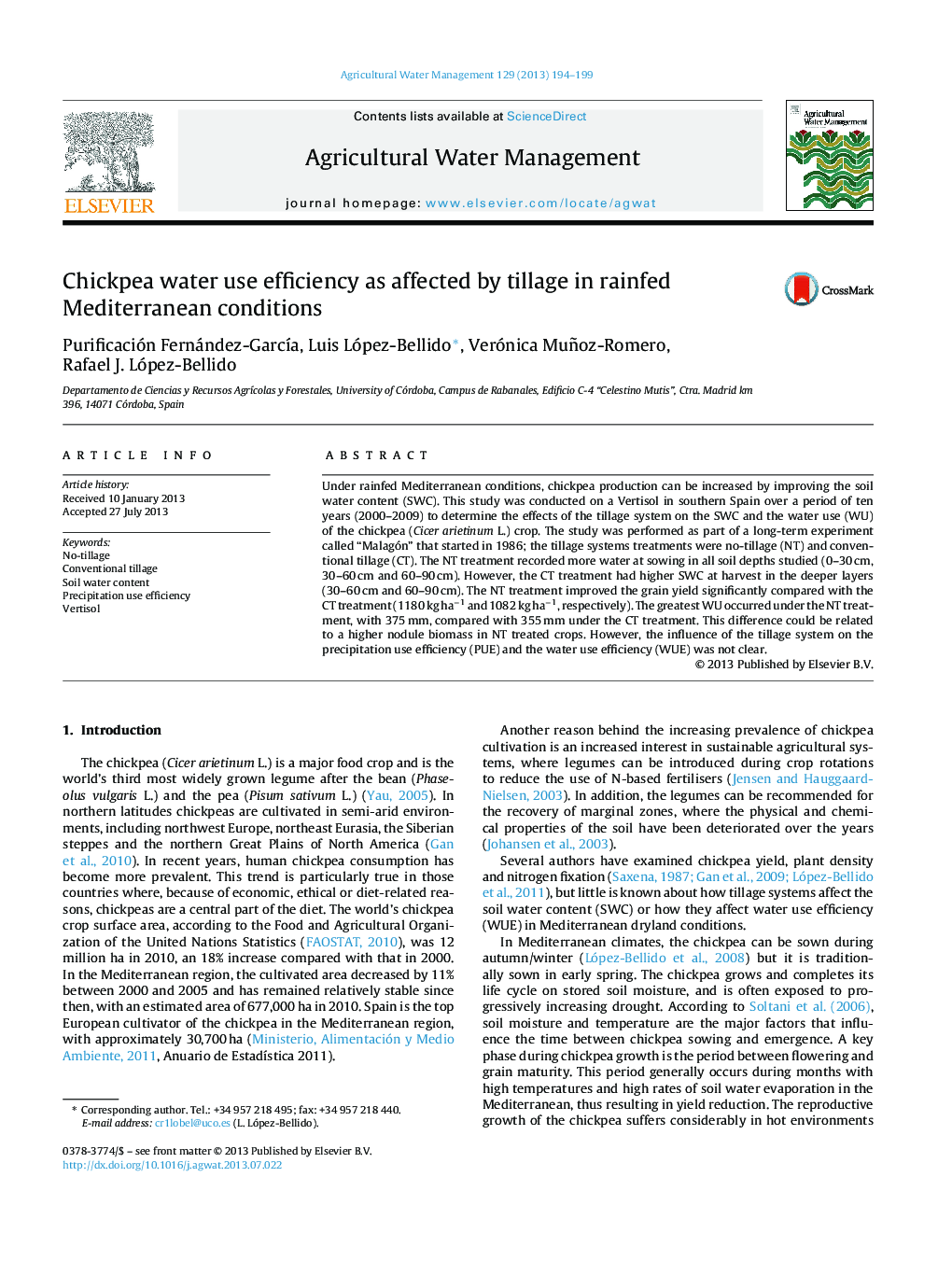| Article ID | Journal | Published Year | Pages | File Type |
|---|---|---|---|---|
| 6364069 | Agricultural Water Management | 2013 | 6 Pages |
Abstract
Under rainfed Mediterranean conditions, chickpea production can be increased by improving the soil water content (SWC). This study was conducted on a Vertisol in southern Spain over a period of ten years (2000-2009) to determine the effects of the tillage system on the SWC and the water use (WU) of the chickpea (Cicer arietinum L.) crop. The study was performed as part of a long-term experiment called “Malagón” that started in 1986; the tillage systems treatments were no-tillage (NT) and conventional tillage (CT). The NT treatment recorded more water at sowing in all soil depths studied (0-30 cm, 30-60 cm and 60-90 cm). However, the CT treatment had higher SWC at harvest in the deeper layers (30-60 cm and 60-90 cm). The NT treatment improved the grain yield significantly compared with the CT treatment (1180 kg haâ1 and 1082 kg haâ1, respectively). The greatest WU occurred under the NT treatment, with 375 mm, compared with 355 mm under the CT treatment. This difference could be related to a higher nodule biomass in NT treated crops. However, the influence of the tillage system on the precipitation use efficiency (PUE) and the water use efficiency (WUE) was not clear.
Related Topics
Life Sciences
Agricultural and Biological Sciences
Agronomy and Crop Science
Authors
Purificación Fernández-GarcÃa, Luis López-Bellido, Verónica Muñoz-Romero, Rafael J. López-Bellido,
